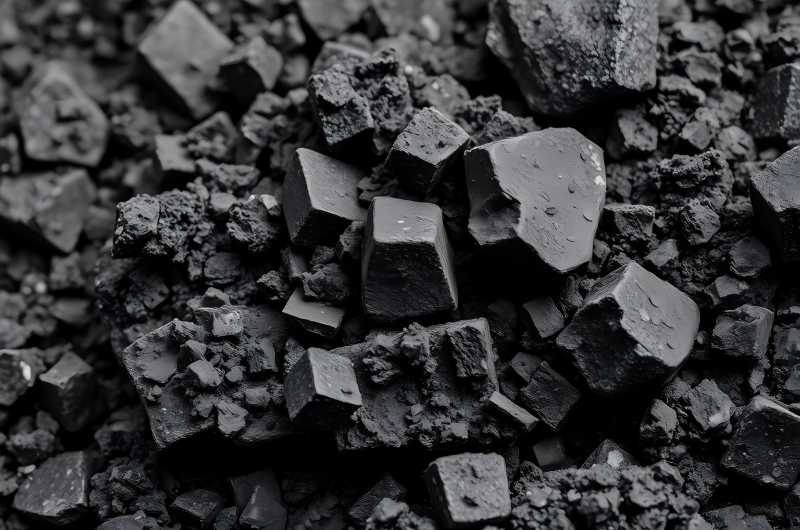BY  GENN
GENN
2024/10
Blog
What Is The Raw Material For Ferro Silicon?
Ferrosilicon is a significant alloy that is applied in many different sectors. It is a mixture of silicon and iron that is usually created through smelting procedures. As an additive, ferrosilicon is essential to the metallurgical sector.
Understanding Ferro Silicon
Ferrosilicon is a significant alloy that is applied in many different sectors. It is a mixture of silicon and iron that is usually created through smelting procedures. As an additive, ferrosilicon is essential to the metallurgical sector.
It is impossible to exaggerate the significance of ferrosilicon in various sectors. It is used in the deoxidation process of steelmaking. Certain melting values of the deoxidation products produced when ferrosilicon is used help to effectively remove oxygen from the steel. The steel’s qualities and characteristics are enhanced as a result.
Ferro silicon is also used in other sectors of the economy, like the manufacture of refractory materials. Due to its special qualities, it is a necessary part of numerous industrial processes.
To sum up, ferrosilicon is an essential raw element that has a big impact on a lot of different sectors. It is an essential alloy in the industrial landscape because of its ability to improve the quality and performance of products.
Components of Ferro Silicon
- Principal Components
Iron and silicon make up the majority of ferrosilicon. Iron gives the alloy strength and durability, and silicon adds several valuable qualities. Deoxidation is aided by silicon, as the steelmaking process demonstrates. Additionally, it raises fluidity and decreases melting point, which facilitates handling in a variety of industrial applications.
- Common Raw Ingredients
Ferrosilicon is produced using several materials that are often utilized. One essential component that offers a high concentration of silicon is silicon metal. Additionally, manganese iron can be added to the alloy to give it particular qualities. One can recycle and use silicon slag, a by-product of other industrial processes, as a raw material. This lowers production costs in addition to reducing waste.
- The Function of Raw Materials
These constituents are essential to understanding ferro silicon’s characteristics and applications. Steel’s high silicon concentration is attributed to silicon metal, which also improves steel’s quality and deoxidation resistance. Manganese iron can strengthen and harden an alloy, which makes it useful for use in the manufacturing of refractory materials. Silicon slag contributes to cost reduction and less environmental impact. Manufacturers are able to make ferrosilicon with customized qualities to fulfill the various needs of different sectors by carefully managing the amounts of these raw ingredients.
Sources and Supply
1. Ferrosilicon is made from raw materials that are acquired from all over the world. Norway, Brazil, China, and other nations with large silicon reserves are common sources of silicon metal. Industry data indicates that a large share of the world’s supply of silicon metal comes from China, which is also a major producer and exporter of the metal.
Countries with abundant manganese reserves, such as South Africa, Australia, and Gabon, are the suppliers of manganese iron. Large-scale mining operations in these nations yield premium manganese iron, which is used to make ferrosilicon and other alloys.
Conversely, silicon slag is a by-product of other industrial operations including steelmaking and silicon manufacturing. It can be obtained from silicon and steel plants, where waste is produced. In addition to cutting waste, recycling silicon slag as a raw material for ferrosilicon production offers a sustainable supply of raw materials.
There are several obstacles in the way of guaranteeing a steady supply of these raw materials. The price fluctuation is one of the primary obstacles. Global market variations in supply and demand, geopolitical events, and currency volatility can affect the cost of raw materials like silicon metal and manganese iron. The cost of producing ferrosilicon, for instance, may rise significantly if there is a scarcity of silicon metal as a result of rising demand from the solar panel industry.
2. The availability of raw resources is another problem. The supply chain may be disrupted by export prohibitions or production capacity limitations in certain nations. Furthermore, the supply of specific raw materials may also be impacted by sustainability issues and environmental legislation.
To tackle these obstacles, ferrosilicon producers must implement multiple approaches. To guarantee a steady supply of raw materials at set rates, one strategy is to enter into long-term contracts with suppliers. This can provide a steady supply of raw materials and lessen the effects of price swings. Investigating alternate raw material sources or creating recycling technologies are additional tactics to lessen reliance on conventional sources. For instance, some businesses are investigating the production of ferrosilicon using recycled materials such as waste silicon and scrap metal.
In conclusion, there are a variety of sources for ferrosilicon raw materials, and a steady supply is essential to the manufacturing of this significant alloy. Manufacturers can fulfill the increasing demand for ferrosilicon across a range of industries by comprehending the obstacles and implementing suitable strategies to surmount them. This will guarantee a consistent supply of raw materials.










